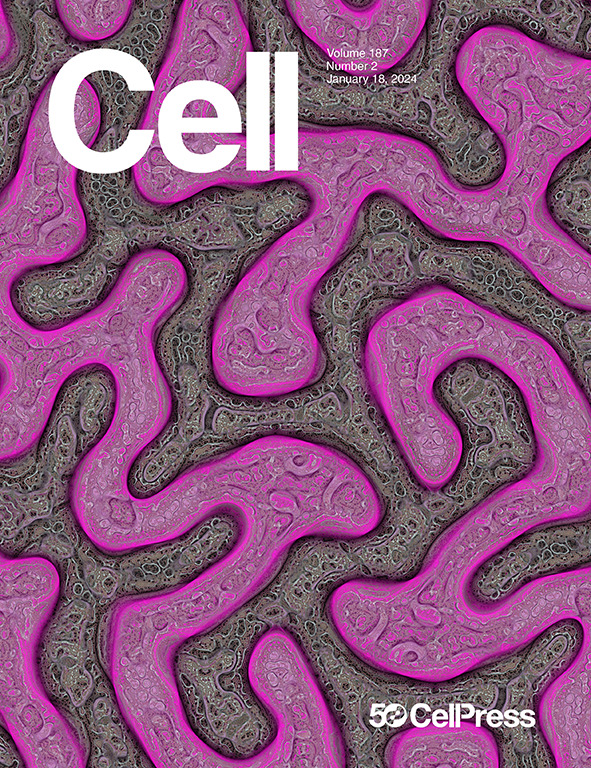Transcriptional regulation by PHGDH drives amyloid pathology in Alzheimer’s disease
IF 45.5
1区 生物学
Q1 BIOCHEMISTRY & MOLECULAR BIOLOGY
引用次数: 0
Abstract
Virtually all individuals aged 65 or older develop at least early pathology of Alzheimer’s disease (AD), yet most lack disease-causing mutations in APP, PSEN, or MAPT, and many do not carry the APOE4 risk allele. This raises questions about AD development in the general population. Although transcriptional dysregulation has not traditionally been a hallmark of AD, recent studies reveal significant epigenomic changes in late-onset AD (LOAD) patients. We show that altered expression of the LOAD biomarker phosphoglycerate dehydrogenase (PHGDH) modulates AD pathology in mice and human brain organoids independent of its enzymatic activity. PHGDH has an uncharacterized role in transcriptional regulation, promoting the transcription of inhibitor of nuclear factor kappa-B kinase subunit alpha (IKKa) and high-mobility group box 1 (HMGB1) in astrocytes, which suppress autophagy and accelerate amyloid pathology. A blood-brain-barrier-permeable small-molecule inhibitor targeting PHGDH’s transcriptional function reduces amyloid pathology and improves AD-related behavioral deficits. These findings highlight transcriptional regulation in LOAD and suggest therapeutic strategies beyond targeting familial mutations.

PHGDH的转录调控驱动阿尔茨海默病的淀粉样蛋白病理
几乎所有65岁或以上的人都至少有阿尔茨海默病(AD)的早期病理,但大多数人缺乏APP、PSEN或MAPT的致病突变,而且许多人不携带APOE4风险等位基因。这就提出了关于一般人群中阿尔茨海默病发展的问题。虽然转录失调传统上并不是AD的标志,但最近的研究表明,晚发型AD (LOAD)患者的表观基因组发生了显著变化。我们发现LOAD生物标志物磷酸甘油酸脱氢酶(PHGDH)的表达改变可以独立于酶活性调节小鼠和人脑类器官的AD病理。PHGDH在转录调控中具有未知的作用,促进星形胶质细胞中核因子κ b激酶亚单位α (IKKa)和高迁移率组盒1 (HMGB1)的转录,抑制自噬,加速淀粉样蛋白病理。一种靶向PHGDH转录功能的血脑屏障渗透性小分子抑制剂可减少淀粉样蛋白病理并改善ad相关的行为缺陷。这些发现强调了LOAD的转录调控,并提出了针对家族突变以外的治疗策略。
本文章由计算机程序翻译,如有差异,请以英文原文为准。
求助全文
约1分钟内获得全文
求助全文
来源期刊

Cell
生物-生化与分子生物学
CiteScore
110.00
自引率
0.80%
发文量
396
审稿时长
2 months
期刊介绍:
Cells is an international, peer-reviewed, open access journal that focuses on cell biology, molecular biology, and biophysics. It is affiliated with several societies, including the Spanish Society for Biochemistry and Molecular Biology (SEBBM), Nordic Autophagy Society (NAS), Spanish Society of Hematology and Hemotherapy (SEHH), and Society for Regenerative Medicine (Russian Federation) (RPO).
The journal publishes research findings of significant importance in various areas of experimental biology, such as cell biology, molecular biology, neuroscience, immunology, virology, microbiology, cancer, human genetics, systems biology, signaling, and disease mechanisms and therapeutics. The primary criterion for considering papers is whether the results contribute to significant conceptual advances or raise thought-provoking questions and hypotheses related to interesting and important biological inquiries.
In addition to primary research articles presented in four formats, Cells also features review and opinion articles in its "leading edge" section, discussing recent research advancements and topics of interest to its wide readership.
 求助内容:
求助内容: 应助结果提醒方式:
应助结果提醒方式:


